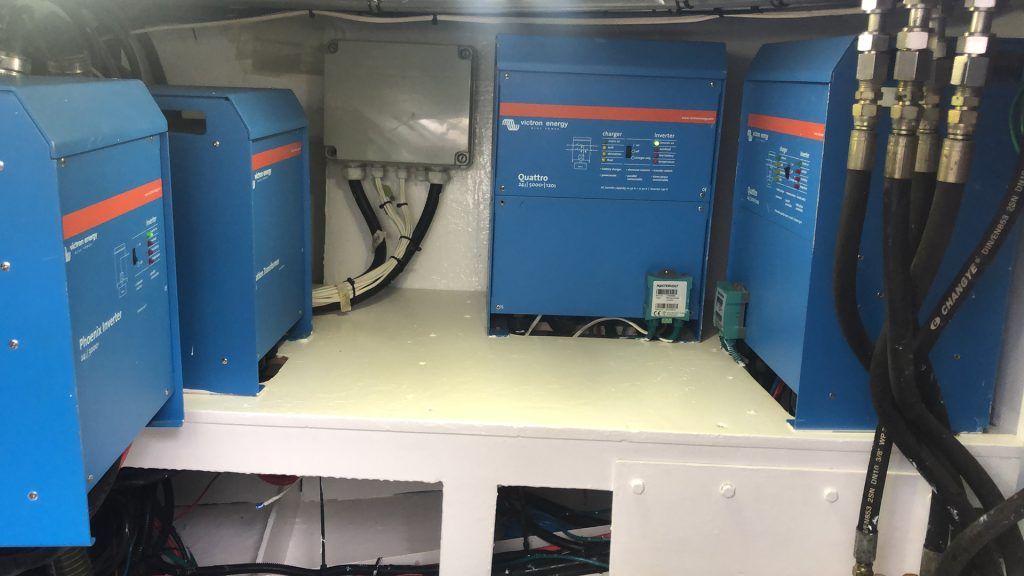Insulation & Ventilation
- The hull has 3 inches of closed cell foam insulation.
- The superstructure is insulated with 2 inches of closed cell foam.
- The roof is insulated with 1 inch balsa wood and hard foam boards.
- All interior bulkheads are spray foamed for sound insulation.
- The entire engine room is additionally encompassed by two foam layers with lead centre, ¼” cork layer for sound and fire protection, and white high-density perforated sound reducing boards.
- The foam has been coated with a fire resistant epoxy to prevent fire, bad smell and humidity absorption.
- The engine room has a large air intake under the steps on the port side-deck, covered by an air-water separator. This intake design minimizes possible down-flooding using 2 sets of baffles and drains.
- The hot engine room air is exhausted through a baffled and drained exhaust canal under the ceiling on the aft deck.
- The air is drawn diagonally over the engine for max cooling efficiency.
- The lazarette has goose neck air-intake on the starboard side and a powered exhaust fan goose neck exhaust on the port side for ventilation of the lazarette.
- Each cabin area, saloon and pilothouse have a powered exhaust fan and at least one 24V air circulation fan.
- Passive air circulation is achieved by opening the foredeck hatch, the port holes, the centre pilot house windscreen and the aft sliding windows in the pilot house and the saloon.
- A centralized air conditioner system maintains the selected temperature and a separate air conditioner/de-humidifier is installed inside the fly bridge cabinet.

